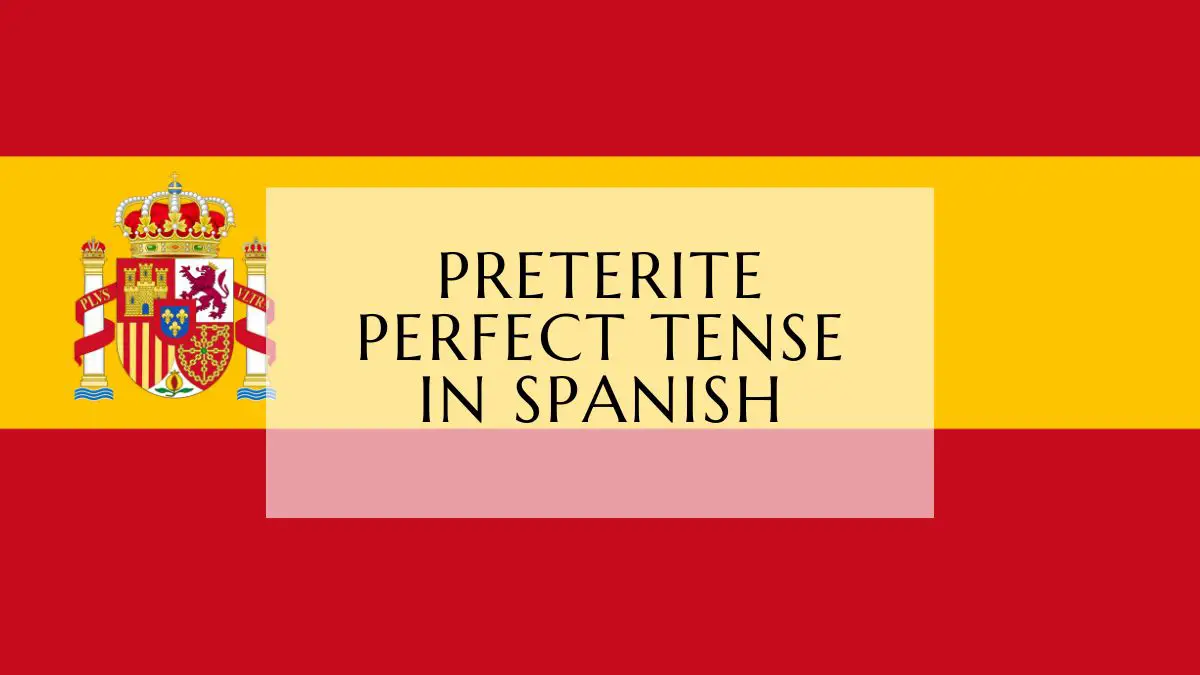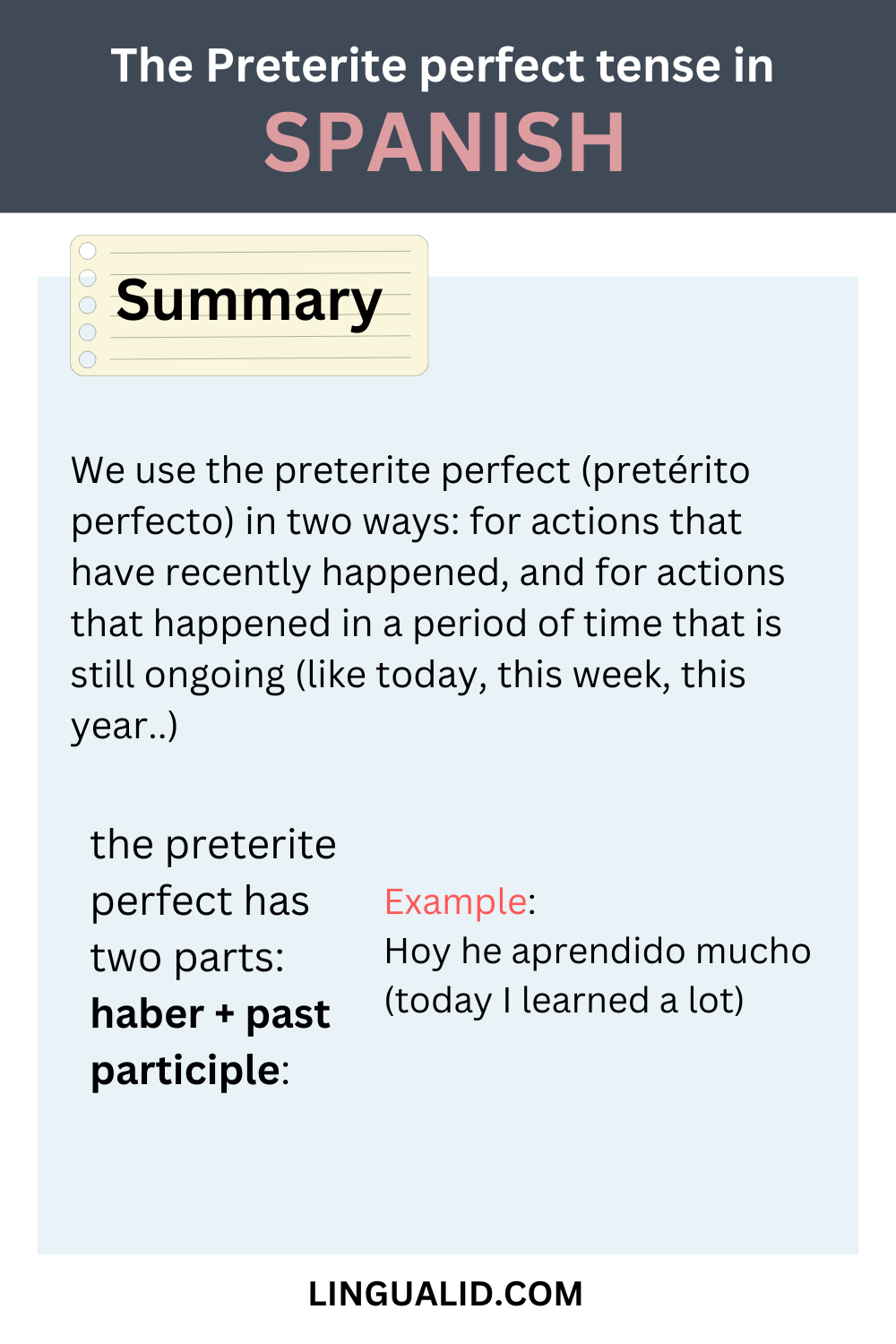In This lesson we will talk about the Preterite perfect tense in Spanish (Pretérito perfecto), its form and when to use it, and the difference between this tense and the pretérito indefinido, let’s get started!

The Preterite Perfect Tense In Spanish
We use the preterite perfect (pretérito perfecto) in two ways: for actions that have recently happened, and for actions that happened in a period of time that is still ongoing (like today, this week, this year..)
Example: Hoy he aprendido mucho (today I learned a lot)
How To Form The Preterite Perfect
As you noticed, the preterite perfect has two parts: haber + past participle, get comfortable as we will explain each one and make it easy to understand:
The verb Haber is an auxiliary verb that tell us who is performing the action (from its conjugation) let’s see its present form:
| Yo | he |
| Tú | has |
| Él/ ella | ha |
| Usted | ha |
| Nosotros / Nosotras | hemos |
| Vosotros / Vosotras | habéis |
| Ellos / Ellas | han |
| Ustedes | han |
Now let’s see how to form the past participle for regular verbs:
Verbs ending in -ar: replace the final “ar” with “ado“: hablado, estudiado
Verbs ending in -ir and -er: replace the ending with “ido”: comido, recibido
Example: Hablar:
| Yo | he hablado |
| Tú | has hablado |
| Él/ ella | ha hablado |
| Usted | ha hablado |
| Nosotros / Nosotras | hemos hablado |
| Vosotros / Vosotras | habéis hablado |
| Ellos / Ellas | han hablado |
| Ustedes | han hablado |
Note: you can practice what you’ve learned here, and learn how to pronounce each of the words in our Memrise course here, don’t know how to use the platform or sign up? we’ve got you covered in this easy-to-follow tutorial here.
Some Irregular verbs:
Hacer (to do) – hecho
Ver (to see) – visto
Volver (to come back) – vuelto
Poner (to put) – puesto
Pretérito Perfecto Vs Pretérito Indefinido
Deciding when to use the “pretérito perfecto” and “indefinido” can get confusing as you’ll find many Spanish speakers using it differently, but the main difference is:
Pretérito indefinido: the action is finished in the past
Pretérito perfecto: the action is in the past, but connected to the present moment, and we can use it also if we don’t want to specify the time when the action has happened.

Happy learning!
